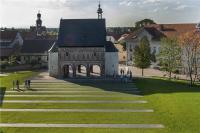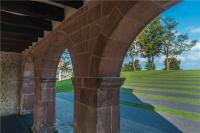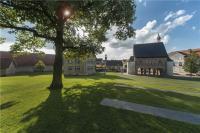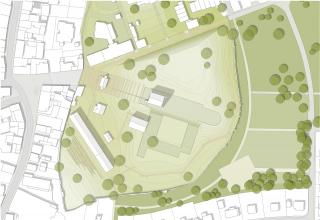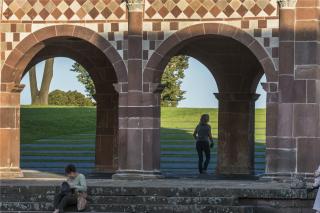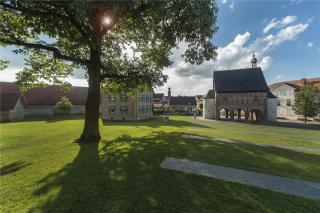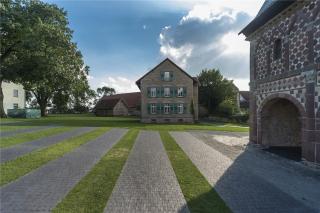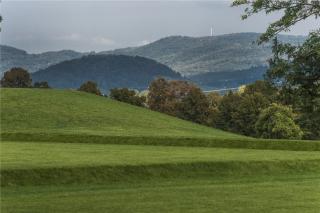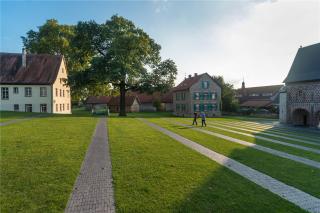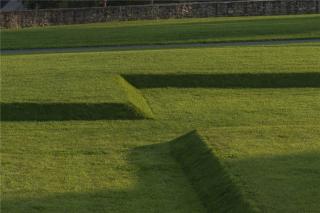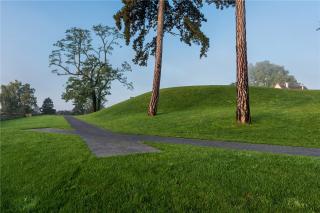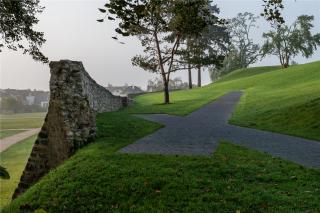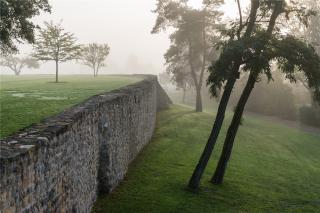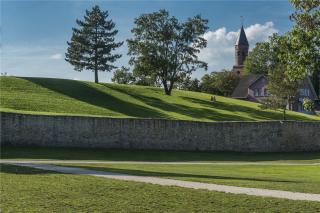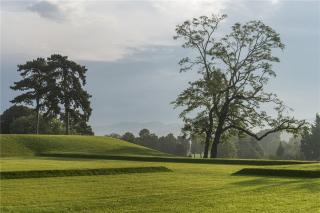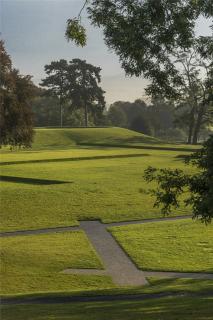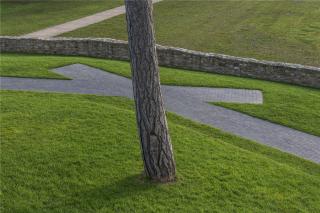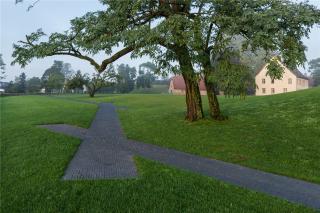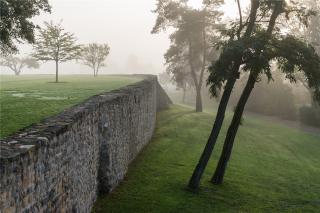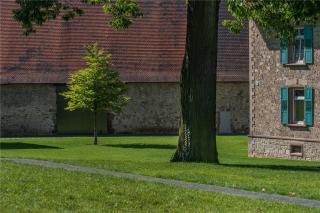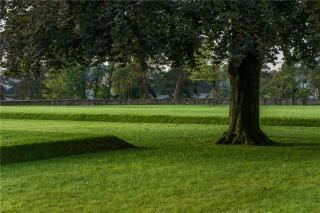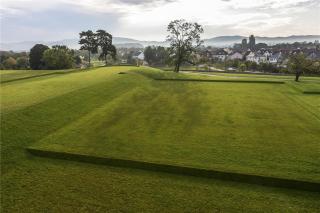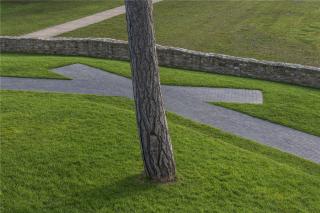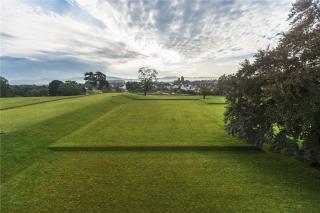德国洛尔施修道院遗址景观设计 | Topotek 1
-
项目名称:德国洛尔施修道院周边景观设计
-
项目地点:德国
-
项目规模:6公顷
-
设计公司:
-
委托方:黑森州宫殿和花园管理局及洛尔施市政府
-
建成时间:2014
位于黑森州南部的 “洛尔施修道院”于1991年被列为世界文化遗产。当地的第一座僧院阿尔滕明斯特(Altenmünster)可追溯到丕平三世时期(约公元764年)。由于其在精神和经济上有着重要影响力,人们在僧院附近一处因冰川运动而形成的巨大沙丘上修建了新的修道院。该建筑群成为古代文化记忆与遗产保护的重要中心。
“Lorsch Abbey” in Southern Hesse was listed as a World Heritage Site in 1991. The first monastery on the site was the Altenmünster which dates from the reign of Pippin the Short. As the monastery gained spiritual and economic influence, an abbey was built nearby on a huge glacial sand dune. The complex became an important centre of restoring the cultural memory/inheritance of antiquity.
▼如今洛尔施修道院仅存的建筑遗迹之一的国王大厅 Königshalle or Thorhalle is one of the only remains of Lorche Abbey


▼场地平面图 Site plan

场地中零星散落着洛尔施修道院建筑群遗迹,包括著名的卡洛林式门厅(即国王大厅)、教堂遗址,以及更早之前的阿尔滕明斯特僧院遗迹,如今它只剩下一大片绿地,古建残存甚少。2009年举办的一场跨学科竞赛提出,通过连接景观和建筑来重新设计该地区,同时要求严格遵守古迹保护的规定。
Parts of the area are the fragments of Lorsch Abbey’s complex with the famous Carolingian gate hall, the church ruins as well as the traces of the preceding Altenmünster, which is mainly a large green space with very few remains. In 2009 an interdisciplinary competition aimed at redesigning the area by connecting landscape and architecture while strictly following the regulations of monument preservation.
▼国王大厅附近的地形铺装形成视线引导 Sight lines near the Königshalle




▼小路连接了阿尔滕明斯特僧院古墙遗迹 The paths link to the original wall of the Altenmünster



▼遗址大部分区域为空旷的绿地 The area is now mainly a large green space with very few remains


我们团队的设计理念是将历史作为一种景观呈现出来。不同于过去常用的历史可视化手法,我们的设计强调地面的处理,严谨而细腻的地形处理凸显了那些未经修饰的遗迹,为场地提供了展示自己的 "舞台 "。我们改造了修道院周边地形,引导游客的观景视线,并在修道院和阿尔滕明斯特僧院间增设了步行道。设计重现了这两座宗教建筑的遗址,并覆盖以保护性的草坪。
Our central idea was to render history visible as a landscape. Unlike former, often historicizing visualizations, our design approach focused on the ground plane. With the help of careful and subtle topographic interventions, the spare remains were accentuated. Thus, we mainly provided a “stage” for the site to present itself. – The glacial sand dune where the Abbey was built on was remodeled. Lines of sight from the visitors’ different points of view were established as well as new paths and walkways to stroll between the Abbey and the Altenmünster. The footprints of the monastic building structures have been reshaped and covered with a lawn-like protective carpet.
▼细腻的地形标记出建筑遗址的位置 Subtle topographic interventions reshaped the original building strunctures






▼场地内的步行小径 Pathways in the area

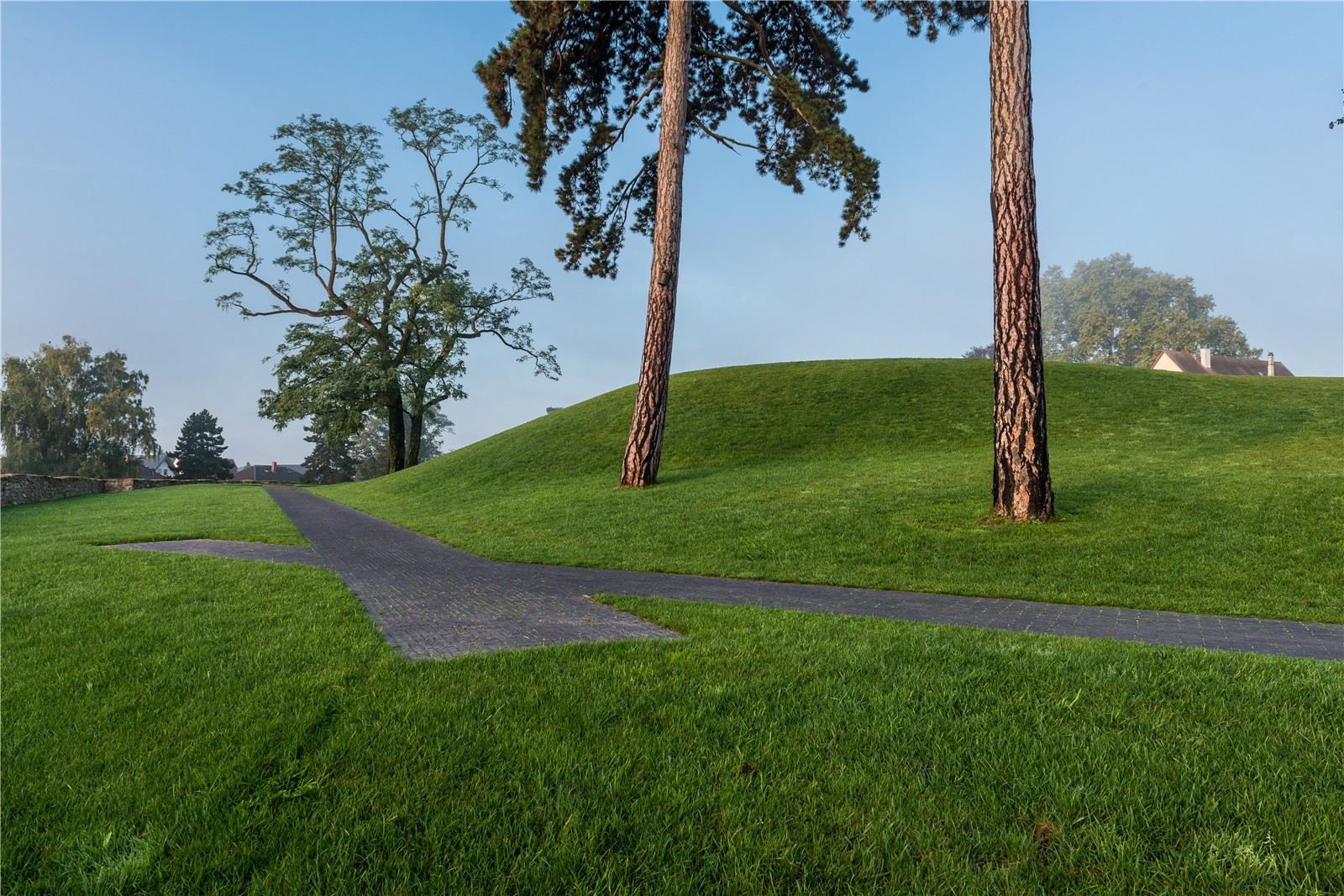


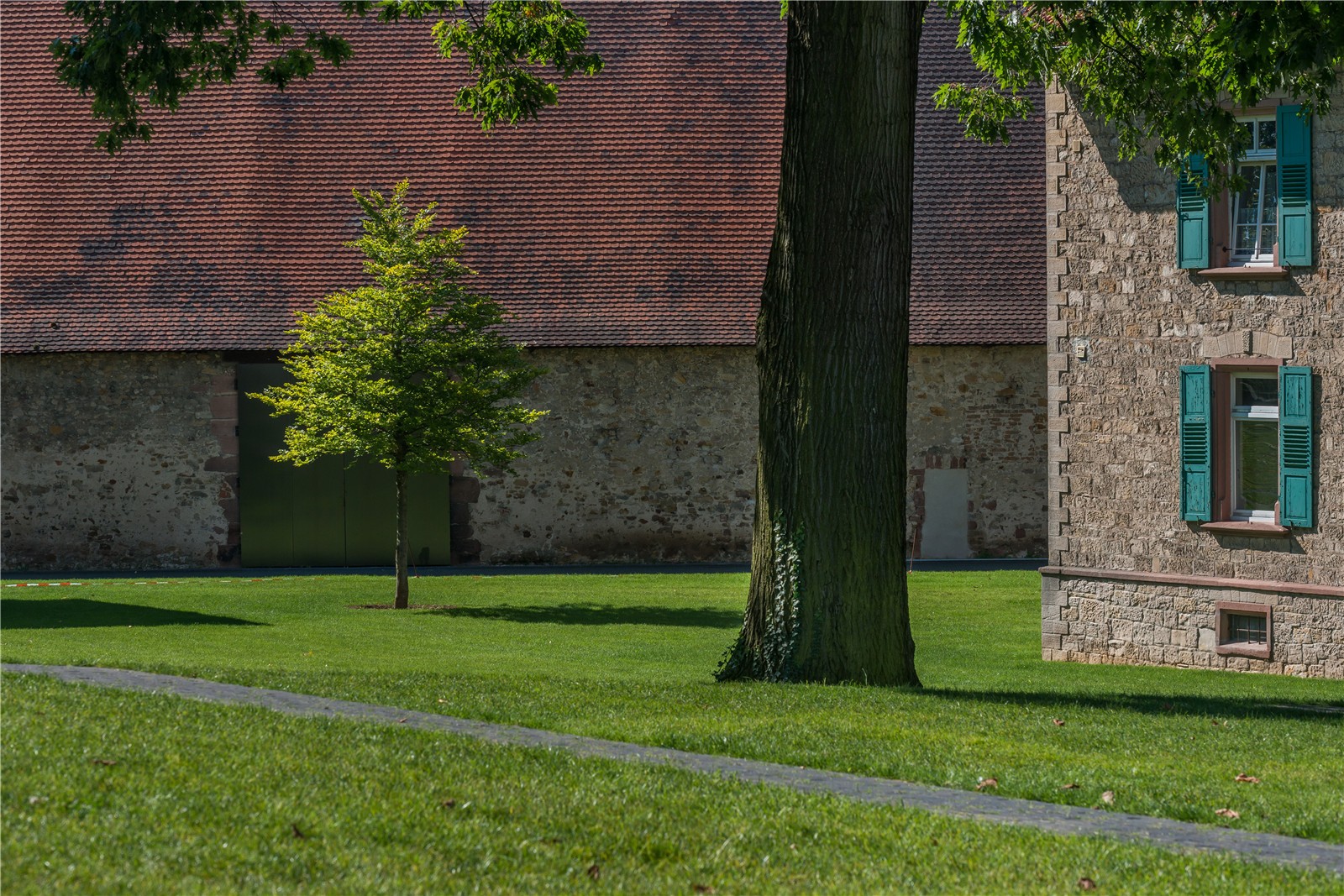
通过这些设计手法,我们成功地让人们感受到这座古老修道院的残缺与消逝。低调谦逊的设计充分体现了对地形、建筑和考古遗迹的尊重。
With these means, we succeeded in making the absence of the ancient monastery felt. The design has resulted in an unobtrusive layout that respects topography, architecture, and archaeological findings at the same time.
▼谦逊的设计向遗址致敬 An unobtrusive layout that respects the site

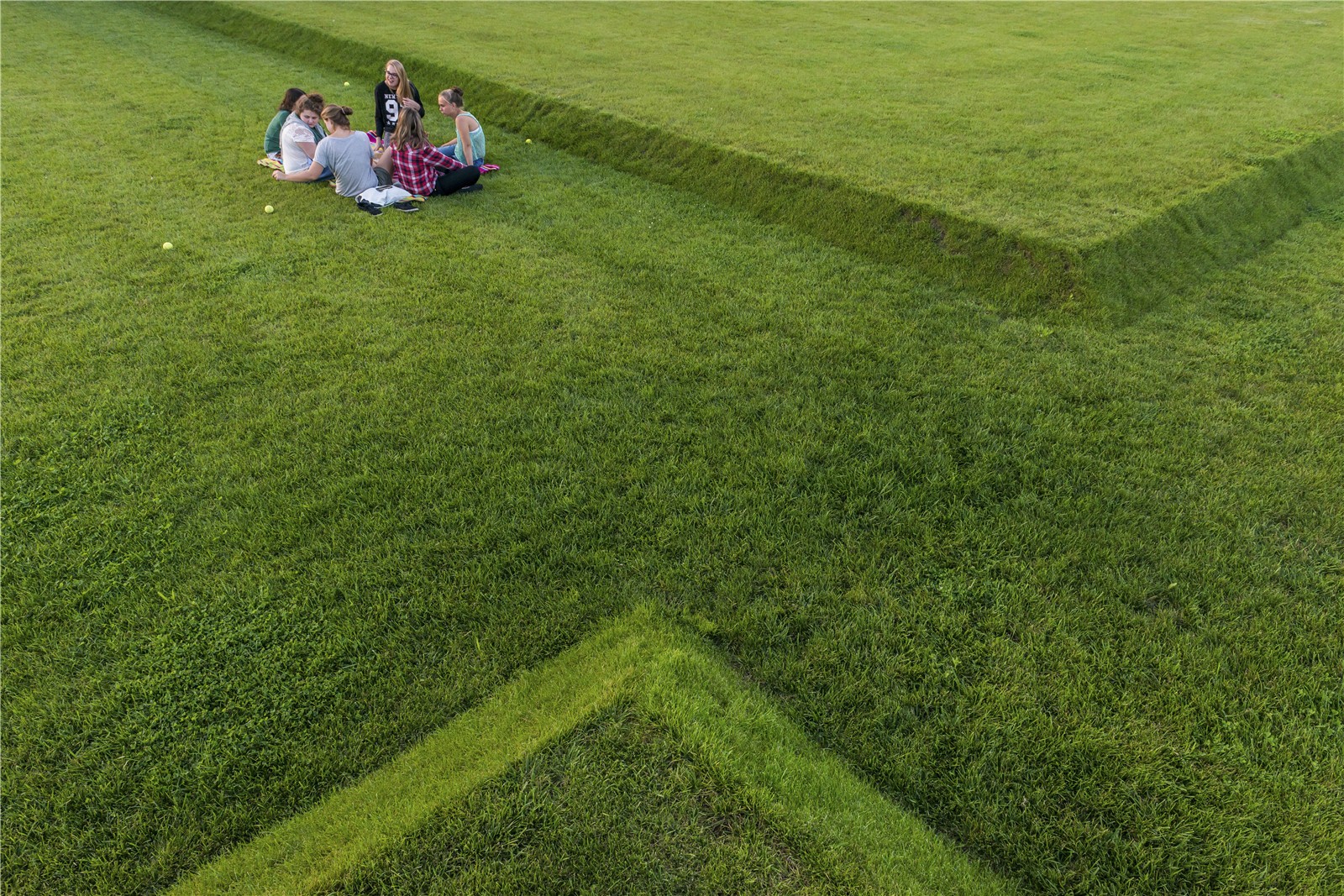
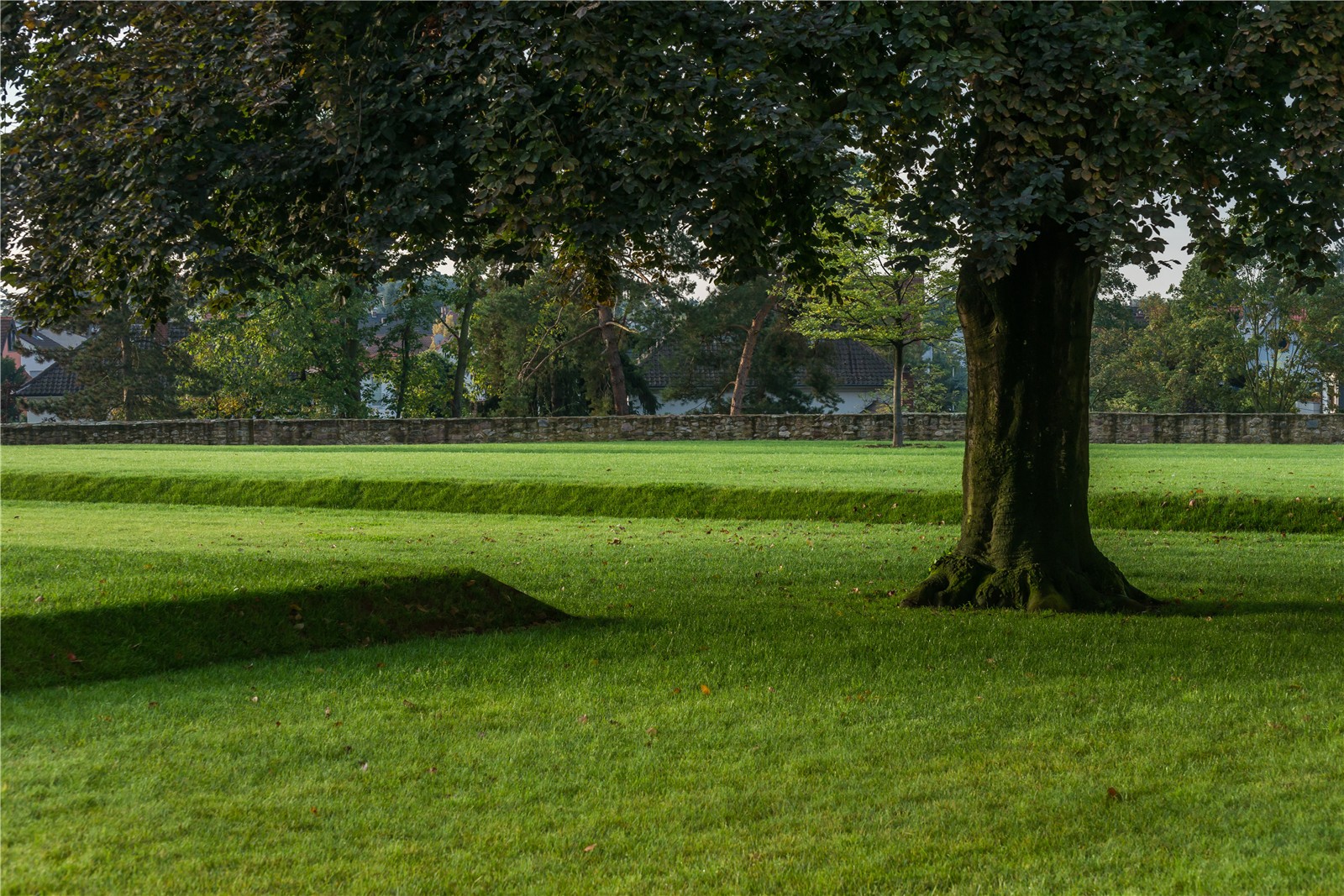

项目名称:联合国教科文组织世界遗产地洛尔施修道院
项目地点:洛尔施,德国
客户:黑森州宫殿和花园管理局及洛尔施市政府
景观设计团队:Topotek 1
合作团队:hg merz architekten
设计时间:2010-2012
建成时间:2014
面积:6公顷
UNESCO World Heritage Site Cloister Lorsch
Location: Lorsch, Germany
Client: State Administration for Palaces and Gardens of Hesse and
the City of Lorsch
Landscape Architecture: Topotek 1
Collaboration: hg merz architekten
Planning: 2010-2012
Completion: 2014
Size: 6 ha
版权声明:本文版权归原作者所有,请勿以江南电竞官网登录入口 编辑版本转载。如有侵犯您的权益请及时联系,我们将第一时间删除。
投稿邮箱:info@landscape.cn
项目咨询:18510568018(微信同号)


